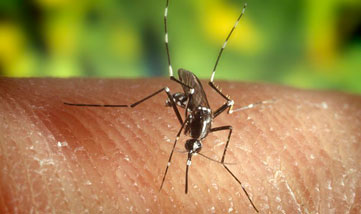 |
| Courtesy of the Centers for Disease Control and Prevention |
Scientists have mapped the structure of two key proteins that play a leading role in how a deadly strain of malaria infects its host and spreads disease.
The findings, by researchers at Washington University School of Medicine in St. Louis, put scientists closer to designing more effective vaccines and drug treatments for the strain, Plasmodium vivax.
Plasmodium vivax is common in India, Southeast Asia and South America. Washington University researchers, led by Niraj Tolia, assistant professor of molecular microbiology and of biochemistry and molecular biophysics, found that this strain of malaria uses a pair of proteins to clamp down on human red blood cells and attack them.
"The Plasmodium vivax parasites have to enter the red blood cells to survive," Tolia explained to FierceBiotechResearch in an interview.
To get inside the red blood cells, the parasite must first attach itself to the cells. Two proteins guide this process: the Duffy antigen, or DARC, and Duffy binding protein, or DBP. DBP binds DARC on red blood cells, so red blood cells that lack DARC are intractable to P. vivax invasion. Tolia and his colleagues have mapped the structures of these two important proteins, which could allow for models to examine infection barriers and aid drug development. The finding appears Jan. 9 in PLOS Pathogens.
Previous research had suggested that one P. vivax protein binds to one protein on the surface of red blood cells. Tolia's study shows that the binding is a two-step process in which two copies of a parasite protein come together like tongs around two copies of a host protein.
"Antibodies that target this interaction may be able to prevent the parasite from entering the red blood cells," Tolia said. Blocking either of the two proteins with drugs or vaccines could potentially stop the infectious process, Tolia added.
Tolia also found evidence that people with immunity to P. vivax have developed naturally occurring antibodies that attach to a key part of the parasite's binding protein to stave off infection.
Though not the most lethal strain of malaria, P. vivax is still deadly because of its ability to hide out in the liver and reemerge years later to trigger new infections. It is harder to prevent, diagnose and treat, and more people are at risk of catching P. vivax than any other strain of malaria.
"Even though malaria isn't endemic to the U.S., travelers are at great risk," Tolia said.
- here's the press release
- read the study